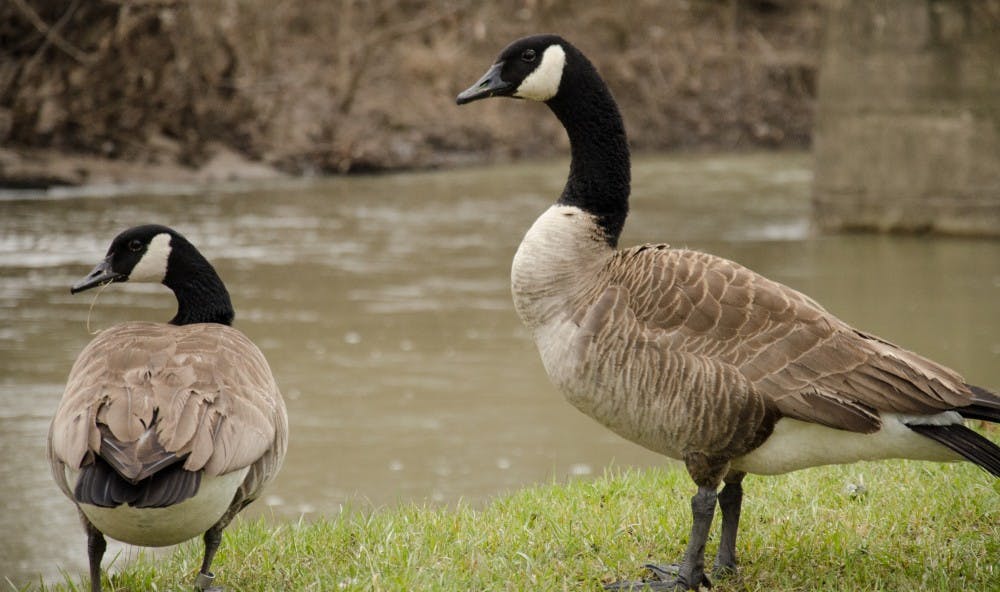Geese are slowly making their return to campus — something that has both students and the university’s facilities planning and management department on edge.
There are many different types of geese, but the most common goose around Muncie, and Indiana in general, are the branta canadensis, or Canada goose, said biology professor Kamal Islam in an email. They are defined by their long necks, black heads and white chins.
The Canada goose makes its home near water, grassy fields and grain fields, but one can also find them on people’s lawns. This is because the Canada goose eats grass and a mowed lawn gives them a wide view of predators, according to the Cornell Lab of Ornithology.
This type of goose is also territorial and hostile.

Geese appear on Muncie streets and sidewalks as spring weather approaches. Madeline Grosh, DN
“At this time of the year [the breeding season], male Canada geese are very protective of their mates,” Islam said. “So, if any person approaches a pair, the male will defend his female. Also, both parents raise their young; therefore, when their young hatch, both parents will be protective of their goslings.”
Islam said the best way to avoid being attacked is to give the geese space.
On campus, the Canada goose primarily can be found around the two duck ponds by Johnson Hall and the pond behind Park Hall, associate vice president of facilities Michael Planton said.
“They also like to hang out where the grass is short,” Planton said. “When it grows, it’s nice and fresh and they like to eat that.”
These geese prefer to stay in flocks. They mate for life and like to migrate to places where the weather is above 35 degrees, according to the Cornell Lab of Ornithology.
Planton said the geese are not migrating like they used to.
“Because winters are a little milder, the water stays open, they have food sources, so they just don’t leave,” he said. “So, the populations build up and they chase off everyone else. They’re called duck ponds, but we hardly have ducks.”
Since the Canada goose is federally protected, facilities is not allowed to remove the species from campus. The only thing facilities can do is discourage the geese from settling on campus without harming the bird, Planton said.

Geese appear on Muncie streets and sidewalks as spring weather approaches. Madeline Grosh, DN
Planton said facilities tries to keep the birds away by using a product called “Goose Be Gone.” He said it costs about $50 per bottle.
“It is a product that we spray on the grass, and when the geese look at the grass it appears to be red and not green,” Planton said. “In their mind, they think this is not edible, so they move somewhere else.”
However, Planton said the process is similar to dying hair. When the grass gets longer, it has to be mowed, but by mowing, facilities removes the grass covered in the product. Then they have to reapply it. For this reason, facilities stops applying it once they begin mowing the grass every week, which begins once the snow stops.
Planton said this year facilities is going to try to use noisemakers to drive geese away. The only concern he has is the possibility of scaring the birds onto the road where they can be hit by cars.
“You’re kind of just sitting there looking at them wishing I could do other things, but I can’t,” Planton said.
In addition to trying to keep geese off campus green spaces, facilities has to hose off walkways due to geese waste. However, Planton said the university doesn’t keep track of those costs because they are minimal.
Contact Hannah Gunnell with comments at hrgunnell@bsu.edu.




